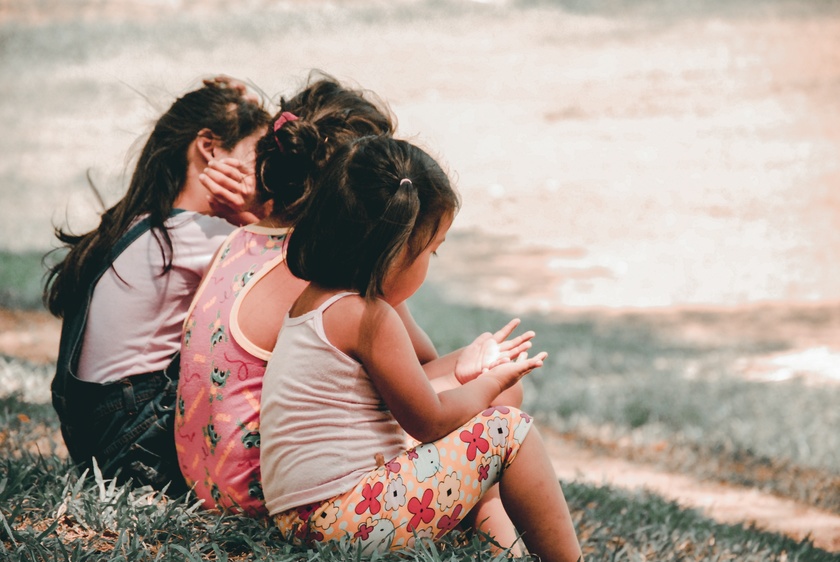
Texas is not the only state that shares a border with Mexico, but in recent years, it has become a false point for illegal border crossing into the United States. One of the major humanitarian crises that are taking place on the border is the number of unaccompanied children (UC), what they went through to make the crossing, and what life looks likes after they enter the system in America.
In many of these cases, the children did nothing wrong. They were sent to this country by parents who either thought it was best for the child or were sent here after some crime that was committed which opens the children up to even more horrors that a child should never have to face.
By definition, an unaccompanied child:
- Has no lawful immigration status in the United States
- Is under 18 years of age
- Has no parent or legal guardian in the United States or no parent or legal guardian in the United States is available to provide care and physical custody
So, let's talk about the foster care system in Texas. It's a touchy subject, no doubt. And when you add migrant children to the mix, things become even more complicated. You see, these children are facing a trauma unlike any other.
They've made a dangerous journey to be prayed upon by coyotes and cartels, placed in homes with strangers, and are often lacking in basic healthcare and language support. It's not hard to see why they might be struggling. The reality is, these kids are experiencing a level of trauma that many of us can't even imagine.
And the sad truth is, the current foster care system in Texas is not equipped to handle these unique challenges. It's not like we can just snap our fingers and make everything better. But it's important that we acknowledge the problem and start taking steps toward a solution.
Texas lawmakers are currently considering a handful of bills aimed to improve the troubled Department of Family and Protective Services, which is in charge of the foster care system.
The state’s child welfare agency has struggled to care for the nearly 20,000 kids in its custody who have been removed from their parent’s homes. The agency can’t find placements with foster families, relative caregivers, or residential facilities for all of the kids in its care. And in a long-running federal lawsuit against the state, court watchdogs found caseworkers were stretched thin, residential facilities housing kids were not in compliance with safety standards and the agency was not tracking child-on-child abuse.
In 2020, three out of every 1,000 kids in the United States were living in foster care. Of those approximately 214,000 children in foster care, 7% live in Texas.
Texas foster care data shows:
- Kids are living in various foster homes or facilities for an average of about 18 months.
- While the numbers are close, males are living in foster care more often than females.
- The plurality of these children are hispanic: 41% in 2020.
- The largest age group is 1-5 years old: 38% in 2020.
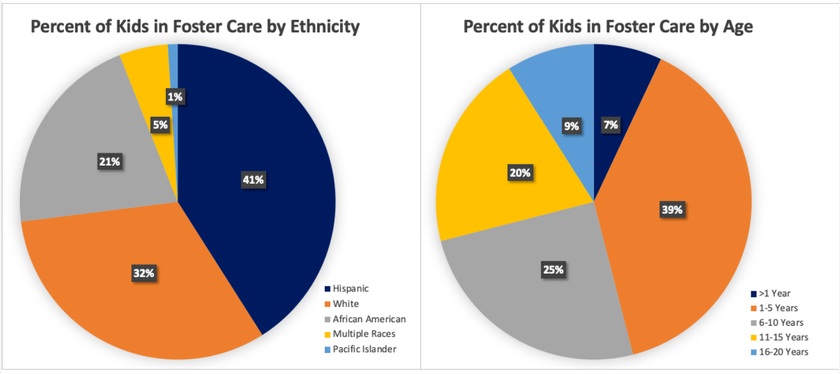
Title 42 ends today, and the number of border crossers that are entering the country will be historic. With so many people taxing the already overworked Border Patrol, how many of the unaccompanied children will be overlooked? What will happen to those children with very little resources to track their migration into the interior of the country?
Currently, CBP report that border crossing is currently up 22.9% and that number will only skyrocket. Year to date, around 12,000 UC have been processed by CBP.
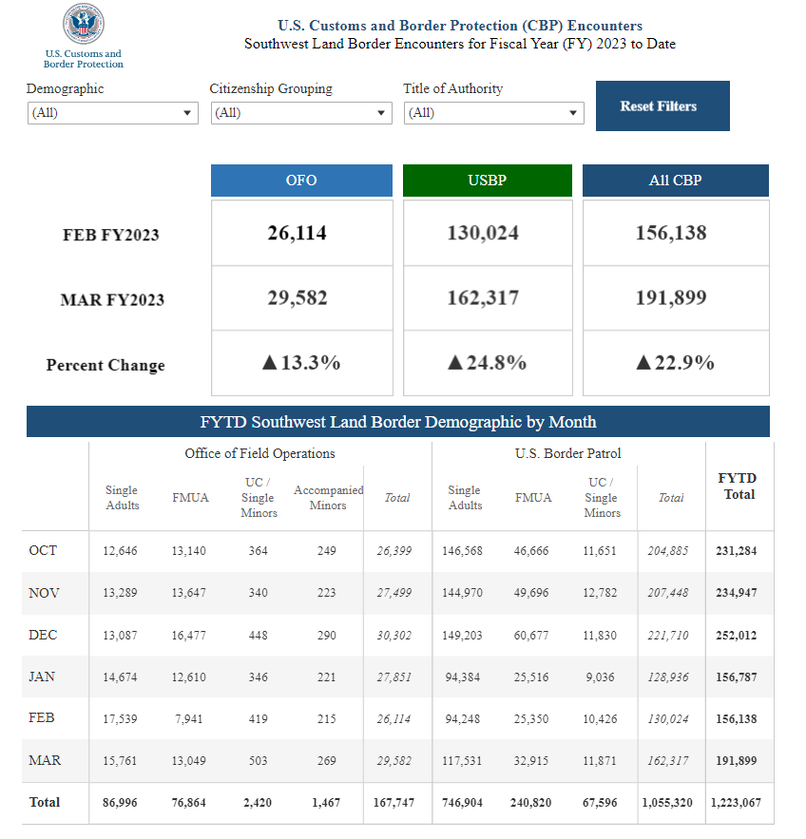
On March 1, 2003, the Homeland Security Act of 2002, Section 462, transferred responsibilities for the care and placement of unaccompanied children from the Commissioner of the Immigration and Naturalization Service to the Director of the Office of Refugee Resettlement.
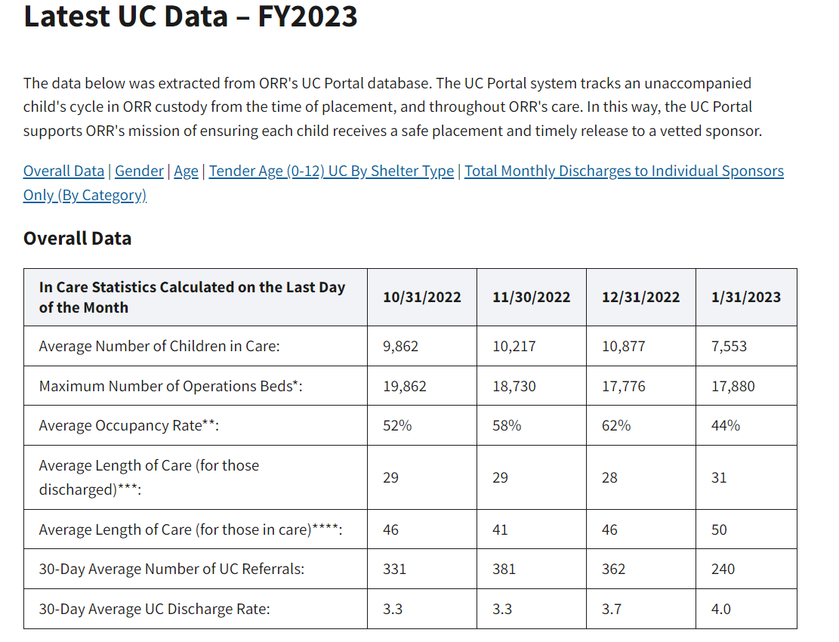

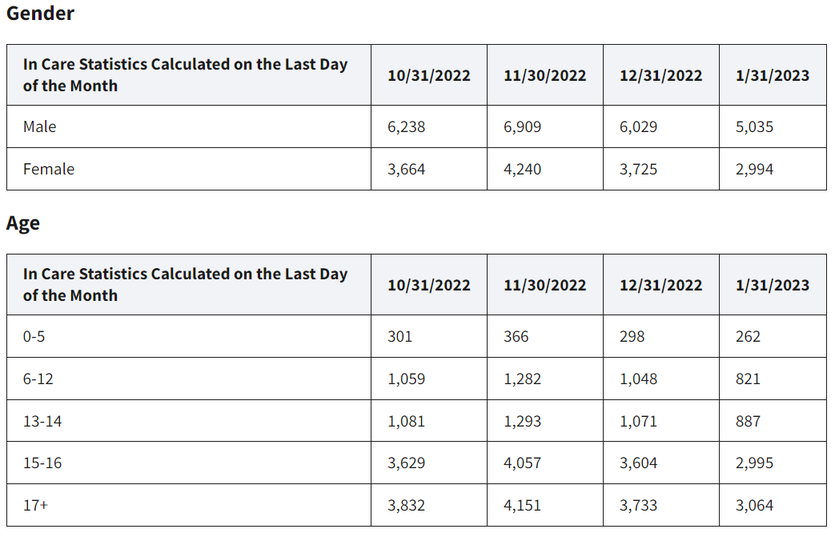
"I am deeply concerned regarding the recent reports that the Department of Health and Human Services (HHS) has mishandled unaccompanied migrant children by placing them with unvetted sponsors, leading to their exploitation and forced labor," Blackburn wrote in the letter to Becerra.
"President Biden's border crisis has placed illegal immigrants in dangerous—and often deadly— situations, and the over 250,000 unaccompanied minors who have crossed our southern border over the last two years are no exception," Blackburn wrote.
Blackburn's letter followed a New York Times report detailing a rise in child exploitation, where children are forced into the labor force — sometimes to pay back their smuggling costs.
The Times reported that while HHS checks on all minors by calling them a month after being released to sponsors, data showed that over the last two years, the agency could not reach more than 85,000 of them and lost immediate contact with a third of migrant children.
"Some sponsors view children as commodities and assets to be used for earning income — this is why we are witnessing an explosion of labor trafficking," Rodas said.
The consequences of trauma
Supporting organizations and resources

















